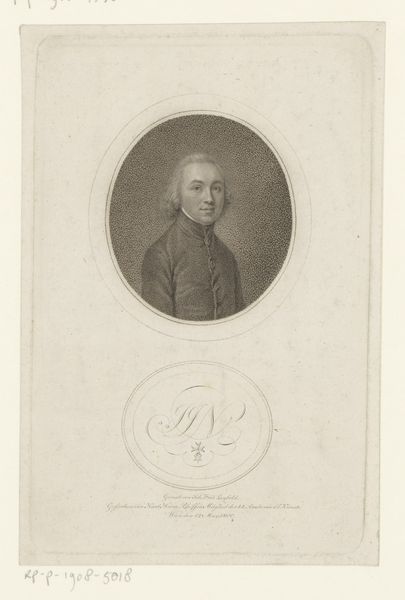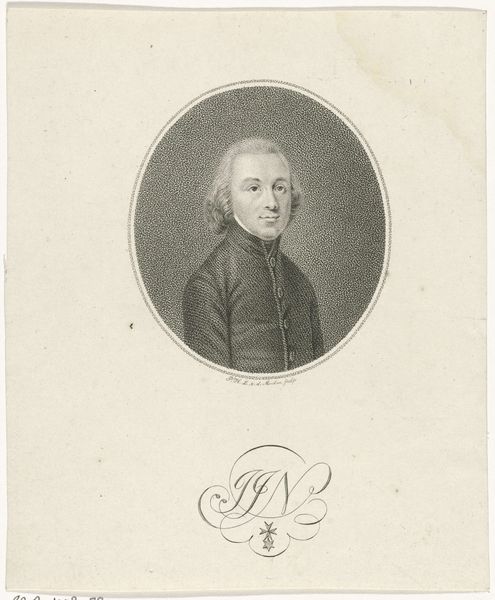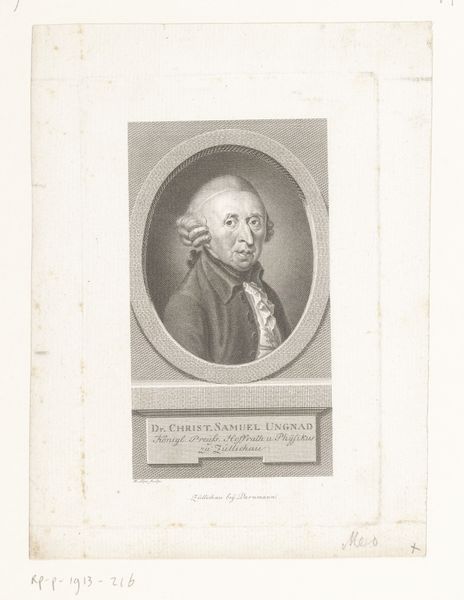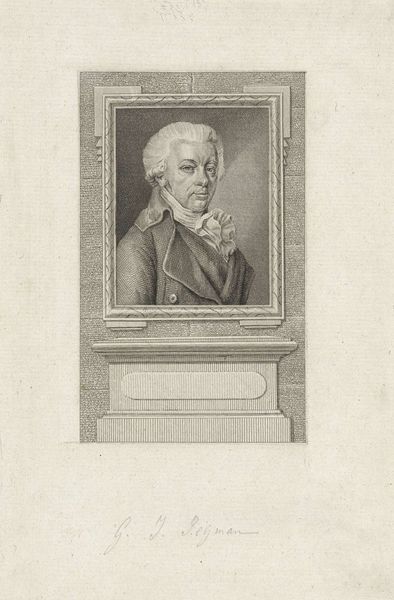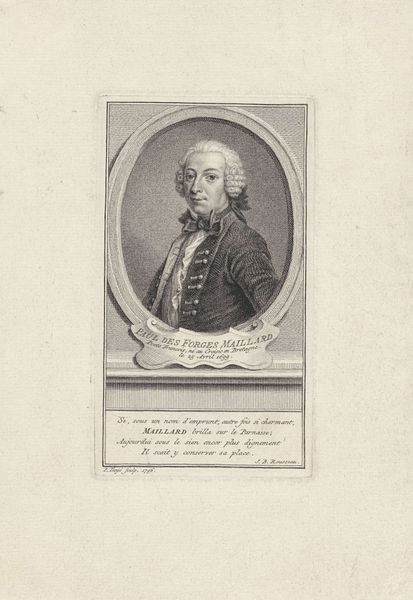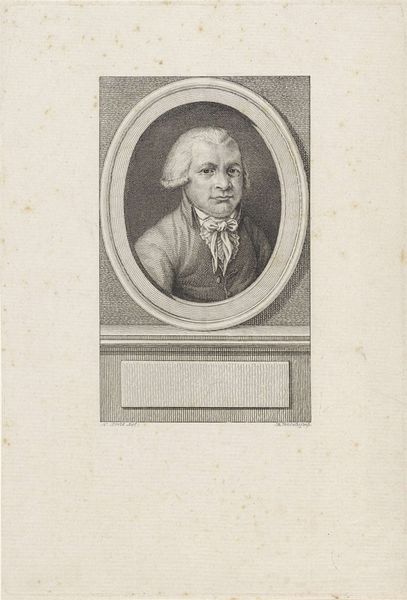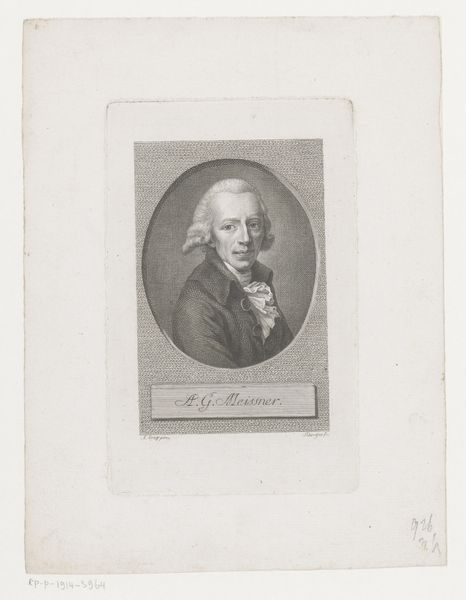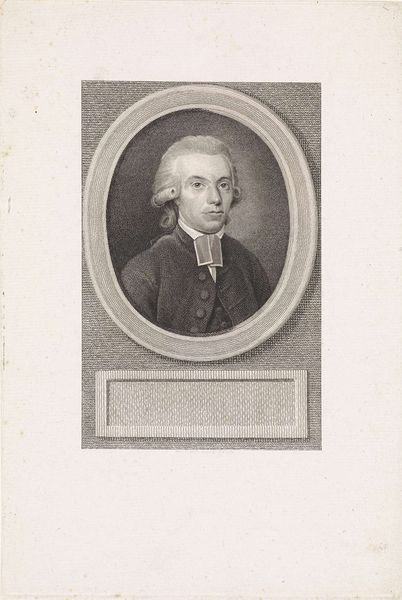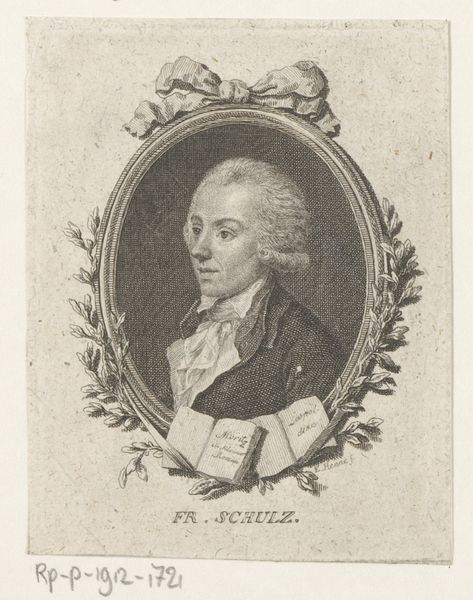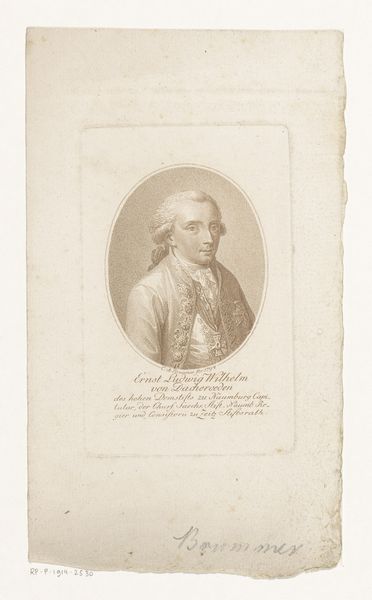
Dimensions: height 100 mm, width 52 mm
Copyright: Rijks Museum: Open Domain
Editor: This is "Portret van Jacques Égide Duhan de Jandun" by Frederik Christian Carstens, made between 1772 and 1798. It's an engraving, and something about the subject's gaze feels very formal, very much of its time. What do you notice first about this portrait? Curator: The subject's powdered wig and refined dress immediately place him within the societal structure of the late 18th century. These were visual cues that signified not just status, but also allegiance to a certain set of cultural values. I’m curious about the gridwork in the background… Almost as though societal norms are the inescapable ground upon which he is constructed. Does that imagery speak to you? Editor: It does. It's like he's contained within it, like he can't escape those societal expectations. Was this common in portraiture of the time? Curator: The oval frame itself is a recurrent symbol, harkening back to classical cameos and coins, implying virtue and timelessness. Consider the enduring power of portraiture to shape legacy – how does an individual, through these crafted images, strive to be remembered? It almost feels as though Carstens sought to place the individual firmly within a pre-existing narrative, a lineage, you might say. Editor: So it’s about fitting in and upholding tradition? Curator: Partly, but there’s also a quiet defiance in his gaze. Do you see it? Perhaps an assertion of self within those constraints. Editor: I do, now that you mention it. The subtle details carry so much meaning. Curator: Exactly! It’s through those details that the subject's individual psychology begins to emerge, subtly challenging the dominant narrative. Every visual element holds a coded story, waiting to be deciphered. Editor: That tension between individual and societal expectations really brings the piece alive. I'll definitely look at portraits differently now!
Comments
No comments
Be the first to comment and join the conversation on the ultimate creative platform.
